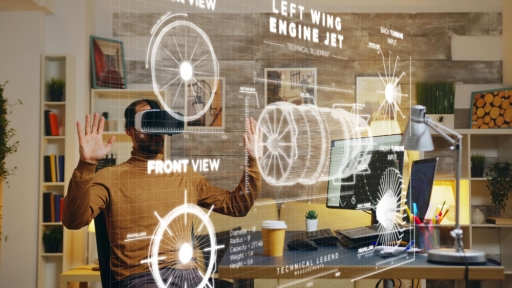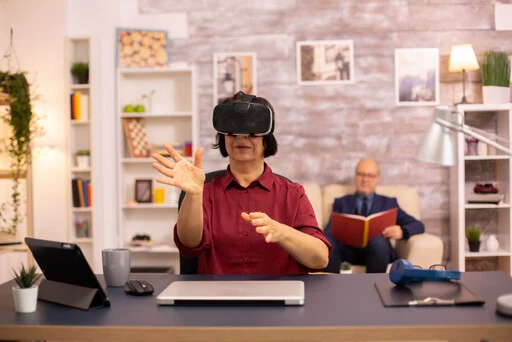Remember dial-up internet? Yeah, us neither. Technology has revolutionized our lives at breakneck speed, transforming communication, work, and leisure. With a tap, we summon information, connect with loved ones across continents, and automate once-tedious chores. But is this constant connectivity a true blessing? This article explores 5 ways technology simplifies our lives, and 3 ways it might be making things a little…complicated. Buckle up, as we navigate the intricate dance between technological ease and its unforeseen consequences.
1. 5 Ways Technology is Making Your Life Easier:
Technology makes life easier in numerous ways. Firstly, it streamlines communication, making it quick and effortless to stay connected with others. Secondly, it enhances convenience in daily tasks by automating chores and simplifying routines. Thirdly, it improves access to information, allowing us to learn and discover with ease. Fourthly, it transforms healthcare and wellness, offering innovative solutions for better health. Lastly, it facilitates remote work and collaboration, enabling teams to stay productive from anywhere.
1: Streamlining Communication:
Technology simplifies communication, making it easy to connect with others instantly. Whether through messaging apps, social media, or video calls, technology ensures we stay in touch effortlessly. With technology, sharing ideas, collaborating, and staying connected becomes a breeze, enhancing our relationships and productivity.
2: Enhancing Convenience in Daily Tasks:
Incorporating technology into our routines automates tasks and simplifies daily activities. Smart devices and home automation systems help manage chores like setting reminders or controlling appliances. Technology saves time and energy, allowing us to focus on more meaningful pursuits.
3: Improving Access to Information:
Technology grants us access to vast amounts of information at our fingertips. Through the internet, search engines, and online databases, learning and staying informed has never been easier. Technology empowers us to explore new topics and stay updated on the latest developments effortlessly.
4: Transforming Healthcare and Wellness:
In healthcare, technology revolutionizes diagnosis, treatment, and overall well-being. From telemedicine to wearable devices, technology enhances access to healthcare services and improves patient care. By integrating technology, healthcare becomes more efficient, accurate, and accessible, leading to better health outcomes.
5: Facilitating Remote Work and Collaboration:
Technology enables remote work and collaboration, allowing teams to stay productive from anywhere. Digital communication platforms, cloud-based software, and project management tools make it easy to collaborate effectively, regardless of location. With technology, teams can communicate, share files, and coordinate tasks seamlessly, ensuring productivity and connectivity in today’s digital workplace.
2. 3 Ways Technology Presents Challenges:
Technology brings challenges alongside its benefits. Firstly, dependency and overreliance on technology can lead to reduced face-to-face interaction and self-reliance. Secondly, privacy and security concerns arise as personal data is collected and stored, posing risks of data breaches and identity theft. Lastly, digital fatigue and information overload are common issues due to constant exposure to digital devices and overwhelming amounts of information.
1: Dependency and Overreliance:
Overreliance on technology is a challenge as people increasingly depend on devices and platforms for daily tasks and communication. This reliance may lead to decreased problem-solving skills and less face-to-face interaction, highlighting the importance of a balanced approach to technology usage.
2: Privacy and Security Concerns:
Privacy and security are significant concerns in the digital age as technology collects and stores personal data. Cybersecurity threats like hacking and identity theft are risks individuals and organizations face. Safeguarding personal information and implementing cybersecurity measures are essential to protect against these threats.
3: Digital Fatigue and Information Overload:
Digital fatigue and information overload are common challenges due to constant exposure to digital devices and overwhelming amounts of information. This can lead to feelings of overwhelm and stress. Managing digital consumption and finding ways to filter relevant information become crucial for maintaining mental well-being in today’s digital world.

3. Conclusion:
In conclusion, technology offers numerous benefits while presenting challenges that need attention. It simplifies tasks, enhances communication, and broadens access to information. However, we must balance these benefits with the drawbacks of dependency, privacy concerns, and digital fatigue. Reflecting on this balance, we can navigate the future of technology integration responsibly, leveraging its advantages while addressing its challenges.
1. Reflecting on the Balance Between Benefits and Drawbacks:
Considering the balance between technology’s benefits and drawbacks is essential for informed decision-making. While it streamlines tasks and improves connectivity, it also poses risks such as dependency and privacy issues. By acknowledging these factors, we can use technology more mindfully, maximizing its benefits while mitigating its negative impacts.
2. Navigating the Future of Technology Integration:
As we look ahead, navigating the future of technology integration requires adaptability and awareness. Embracing innovation while being mindful of its effects, we can shape a future where technology enhances our lives without overwhelming them. Let’s stay informed, collaborate, and advocate for responsible technology use to create a more balanced and sustainable digital future.
You might like to read our other post on the related topic please click here.



















































